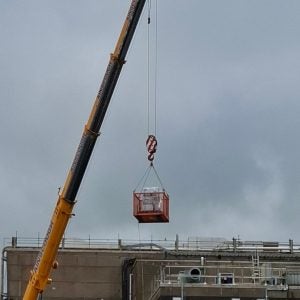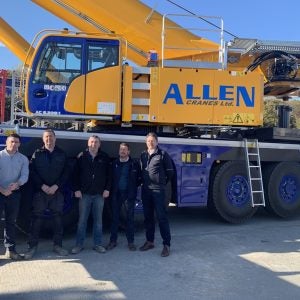On July 23, 2008, James Dawes of Topeka, Illinois, was killed after being struck by the boom of a Link-Belt crane, operated by Area Erectors. The accident was caused by the boom hoist wire rope breaking, dropping the boom onto the aerial lift in which Dawes was working.
A section of wire rope was sent to OSHA’s Salt Lake Technical Centre for testing. The technical centre looked at a 42in section cut from the failed rope. Clamps were attached, separating the rope into a 10in section of unbroken rope, and a 32in section with the break at one end. The rope was 6 x 25 Filler, with six outer strands of 19 main wires and 6 filler wires. Inside, the rope had an independent wire rope core, with six seven-wire strands and an additional seven-wire centre strand. Each lay of the regular lay rope was a nominal 5in long. The rope manufacturer was not identified; the report quotes different manufacturers, as an example of advice inspectors should be aware of.
After cleaning, the rope was inspected. Although there was wear, the wear fell within acceptance standards. The technical centre found five ‘valley breaks’ within one lay of rope. The report quotes the ASME B30.5 crane standard, which says discard criteria should include “six randomly distributed broken wires in one lay, or three broken wires in one strand in one lay”. Advice from WireCo Worldgroup defines a ‘valley break’ as where “a wire fractures between strands, or a broken wire protrudes between strands”. WireCo advises that a rope should be discarded if there are two or more valley breaks; ASME B30.5 additional inspection is required if any wire has broken at the point of contact with the core, or protruded out of the rope structure.
The rope was separated into strands, and the outside of each strand inspected. The strands themselves were not opened, so breaks within the strand were not counted. In the 32in section (with the failed section of rope at one end), the inspectors found 235 fatigue breaks, or 39 breaks per lay. In one section they found 15 breaks in one strand in one lay.
OSHA did not cite Area Erectors, but said the accident was caused by bending fatigue in the rope. The number of breaks that should have been seen in an inspection was far above the recommended discard critera. The report says that ‘inspections performed at regular intervals can mitigate a rope failure due to fatigue’. The report says Hills Crane Inspection Services’ inspection had not included an inspection of the entire rope length.






